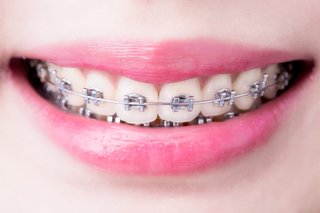Comprehensive Guide to Orthodontics Treatments for Correcting Oral Imbalances
In the world of orthodontics, the journey to achieving a perfectly lined up smile involves a myriad of treatments tailored to correct dental imbalances. From typical braces to unnoticeable aligners and even medical choices, the field of orthodontics uses a variety of options to deal with differing levels of dental abnormalities. Recognizing the ins and outs of each procedure, including their mechanisms, advantages, and potential downsides, is critical in making educated decisions concerning one's orthodontic therapy. As we navigate with the extensive overview to orthodontic procedures for correcting oral misalignments, the detailed details of each approach will unravel, dropping light on the course toward a useful and harmonious oral positioning.
Orthodontic Procedures Review

Along with standard dental braces and clear aligners, orthodontists might additionally recommend other treatments like headwear, palatal expanders, or retainers to address specific alignment concerns (cumming braces). These treatments are customized per individual's special demands and might involve a combination of therapies to accomplish the desired outcomes. Normal changes and monitoring are important components of orthodontic therapy to make certain progress gets on track and to make any kind of necessary alterations along the road. By going through orthodontic procedures, people can not just achieve a straighter smile but additionally improve their total oral health and wellness and function.
Conventional Braces: Just How They Work
When thinking about orthodontic therapies for oral misalignments, standard dental braces attract attention as a reliable approach for remedying teeth placing. Traditional braces consist of brackets, cords, and bands that collaborate to use continual pressure on the teeth, slowly relocating them into the wanted alignment. The brackets are connected to the teeth utilizing a special adhesive, and the cables are threaded with the brackets. By adjusting the tension of the cords, orthodontists can control the direction and force related to each tooth, directing them into proper alignment in time.
One secret element of how traditional dental braces job is the procedure of bone remodeling. As stress is put on the teeth with the braces, the bone bordering the teeth is improved to sustain the new tooth positions. This makeover is necessary for the long-lasting security of the corrected alignment. Patients will require routine adjustments at the orthodontist's workplace to make sure the braces remain to apply the correct stress for efficient teeth movement.
Undetectable Aligners: Disadvantages and pros
Unnoticeable aligners provide a very discreet and hassle-free option to conventional dental braces for fixing oral misalignments. These clear, tailor-made trays are virtually unseen when used, making them an appealing choice for people seeking a much more visually pleasing orthodontic treatment. One of the key benefits of invisible aligners is their removability, enabling easier maintenance of oral health compared to standard dental braces. Clients can remove the aligners before consuming or brushing their teeth, decreasing the threat of food getting stuck in the home appliance and simplifying the cleaning process.

Surgical Orthodontic Options
Surgical treatments in orthodontics present feasible options for resolving intricate dental imbalances that may not be properly resolved via standard orthodontic treatments. While standard braces and invisible aligners can deal with numerous orthodontic issues, particular cases call for surgical intervention to attain ideal results. Surgical orthodontic choices are normally recommended for extreme malocclusions, substantial jaw disparities, and instances where the underlying bone framework requires adjustment to attain correct alignment.
One common surgical orthodontic procedure is orthognathic surgical procedure, which involves rearranging the jaws to remedy functional concerns such as trouble eating or speaking. This surgical procedure is often performed in partnership with an orthodontist who helps line up the teeth before and after the procedure. Surgical orthodontics might likewise entail treatments to subject impacted teeth, get rid of excess periodontal cells, see it here or reshape the jawbone to create a more unified facial profile.
Before taking into consideration medical orthodontic options, patients go through an extensive examination to identify the necessity and prospective advantages of such interventions. aligners. While surgery might seem complicated, it can substantially improve both the feature and looks of the smile in situations where traditional orthodontic treatments fall short
Retainers and Post-Treatment Care

Post-treatment care involves adhering to the orthodontist's instructions diligently. This may consist of proper oral hygiene methods, attending follow-up visits, and putting on the retainers as prescribed. Failure to conform with post-treatment treatment guidelines can cause regression, where the teeth slowly return towards their original positions. Constant retainer wear, great oral hygiene, and regular oral check-ups are necessary for preserving the results achieved with orthodontic surgical treatment and making certain the long-lasting security of the corrected dental positioning.
Final Thought
To conclude, orthodontic treatments offer various choices for remedying dental imbalances. Standard dental braces utilize metal braces and wires to change teeth into proper placement. Invisible aligners give an even more discreet choice however may not be appropriate for all cases. Surgical orthodontic options are offered for a lot more extreme misalignments. Retainers are typically utilized post-treatment to maintain the new positioning. On the whole, orthodontic treatments can properly enhance oral health and wellness and aesthetic look.
As we navigate with the thorough overview to orthodontic procedures for fixing dental imbalances, the detailed information of each technique will unfold, dropping light on the course toward a useful and harmonious dental this alignment. - cumming braces
One of the here most common orthodontic therapies is the usage of dental braces, which consist of metal brackets and cords that apply gentle stress to gradually change teeth into the preferred position.When thinking about orthodontic treatments for oral imbalances, standard braces stand out as a tried and true approach for remedying teeth positioning. Furthermore, invisible aligners may not be suitable for complicated orthodontic problems that call for even more significant teeth motion, as they are typically recommended for light to moderate cases. Retainers are personalized orthodontic gadgets made to hold teeth in their dealt with placements after the completion of orthodontic therapy.